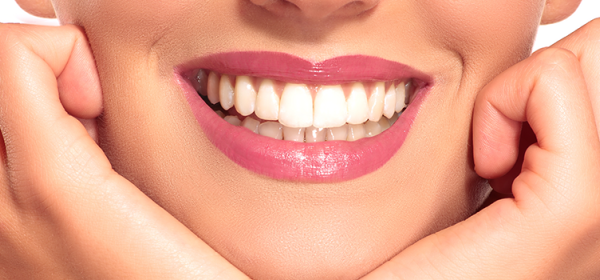Interview with Dr. Carey O’Rielly- Explore Holistic Dentistry and the Impact Dentistry has on Patient Health
by Dr. Dan Kalish

Dr. Carey O’Rielly is a holistic dentist operating in San Diego who truly understands and practices the tenets of holistic health, both as a practitioner and in his personal life. His remarkable knowledge of the field came about through years of study and experience, initiated by his own work-related health challenges.
After a decade of hard work, stress and exposure to environmental toxins, he started to investigate toxicity issues in the practice of dentistry. Through a growing interest in health conscious dental care, he associated with several specialized holistic/ cosmetic practices. As a result he was exposed to a comprehensive range of experience and methodologies in the field. All this contributed to his philosophy that the mouth is the gateway to the body. Learn more about holistic dentistry and Dr. O’Rielly at his website or visit his YouTube channel.
Hotspots to Watch Out ForDr. O’Rielly reviews dental hotspots in his interview to aid practitioners in recognizing when it is time to refer out to a dentist. His philosophy that the mouth is the gateway to the body is evident in his practice and helps connect dentistry with other medical arenas. Often healthcare professionals forget this fact when faced with patients showing symptoms that may be caused by poor dental health such as fatigue, depression and gut related problems.
Two hotspots to watch out for are amalgams and reddened gums. Amalgams are composites composed of 40-55% mercury along with silver, tin and copper. The amalgams slowly release mercury, which can be inhaled or ingested by the patient, accumulating overtime. For patients that have poor detoxification systems, already have a high level of toxins, or are immune comprised, this can have detrimental affects on the whole body. Neurological symptoms may manifest in patients with a high amount of mercury toxicity.
Reddened gums are an indicator of gum disease and signify there may be bacteria such as spirochetes or parasites like amoeba living within them, which cause irritation and inflammation. The types of bacteria found in the gums can be aggressive and very hard to kill. Even with the use of antibiotics, some of the bacteria persist by burrowing into cells, including white blood cells, to hide out and then recolonize later on. Videos of this process can be found here. If a patient has reddened gums it’s a good idea to ask how many times a year they get maintenance done on their teeth and how regularly they floss. If there are bacteria hiding out in their gums any type of bleeding can cause the bacteria to spread into the patient’s blood stream and become a systemic infection. Dr. O’Rielly discusses one of the best treatments for bacteria are brushing your teeth with baking soda as long as the patient takes the necessary precautions. Videos of baking soda killing the bacteria can be found here.
Amalgam Removal and ToxinsSince older amalgams are mainly composed of mercury and other metals, many patients wonder when it is a good idea to get them removed, if at all. Dr. O’Rielly discusses the protocol he recommends for patients to take when getting amalgams or crowns replaced to make it a safe experience for both patient and dentist.
The first step is to find a good dentist that has the goal of limiting the amount of exposure to toxins when the amalgam is removed. It is important the patient neither inhales nor ingests the toxins that are dislodged and aerosolized during the removal. The tooth should be isolated from the rest of the mouth and the patient hooked up to an oxygen tank so they aren’t breathing in the contaminated air from the room. This is a basic protocol, but requires some effort on the dentist’s part so it’s important to advise your patients to look for a dentist that is willing to cooperate and has the same goals in mind. Dr. O’Rielly also points out detoxification may be necessary after the procedure, as the body may start to release toxins from other areas of the body after the burden of the amalgams has been removed.
Amalgams generally last for around 20 years and tend to release more mercury when the filling is older as it may begin to crack or tarnish. The mercury gets swept off the surface of the amalgam when a person chews. The metal may also cause micro cracks in the tooth over time, so a crown may be necessary after the amalgam is replaced. Dr. O’Rielly also mentions how the compatibility between metals in the mouth is another aspect of amalgams to consider. If there are different metals near each other they may react and make the electrical field more unstable leading to greater sensitivities and the tooth to breakdown faster.
The Root Canal DebateWhen thinking about root canals Dr. O’Rielly states it is important to recognize each patient is different and depending on their dental history and general health may be a good or poor candidate for having a root canal. A root canal can only get rid of up to 95% of the bacteria present in the gums, tooth and bone. As a dentist he would like to preserve a patient’s tooth if possible, so if there isn’t much drainage of bacteria and the patient is younger and in good health, they are generally a good candidate. However, patients with weaker immune systems or who have previously had root canals/ extractions are more likely to have bacteria return to the tooth earlier and aren’t very good candidates. In general, for a healthy candidate with a strong immune system the bacteria are still expected to return within 20 years so follow up is necessary.
Infections in teeth can also be masked and can be easily missed on a 2D image x-ray. Dr. O’Rielly recommends using a 3D image to be able to clearly see if an infection is present when a person has a history of root canals or are showing common symptoms of infection. However, the 3D image is capable of finding infections in teeth when symptoms are still very mild, allowing the dentist to catch the infection early. When teeth have been under a lot of trauma from previous dental work they are more likely to get infected, so previous root canals can be a sign that other infections may be present as well. Teeth have only a small blood supply that is responsible for healing the entire tooth, so often the healing process is very slow. After being repetitively put under trauma a tooth may even lose their blood supply, causing the nerve to die and then the entire tooth to die with it.
As a healthcare professional it is important to acknowledge the disproportionate amount of people that may be showing symptoms due to dental issues, which is why it is imperative to reflect on Dr. O’Rielly’s philosophy that the mouth is the gateway to the rest of the body. Dr. O’Rielly describes it as a gut-brain-mouth connection because whatever is going on in a patient’s mouth can easily spread to the rest of the body and cause systemic reactions. Amalgams, gum disease and root canals are a bigger problem than most people realize. As a result it is important to refer out to a dentist if certain hotspots and symptoms Dr. O’Rielly discusses in his interview are brought up. If you would like to learn more about holistic dentistry or Dr. O’Rielly please visit his website or his YouTube channel.

